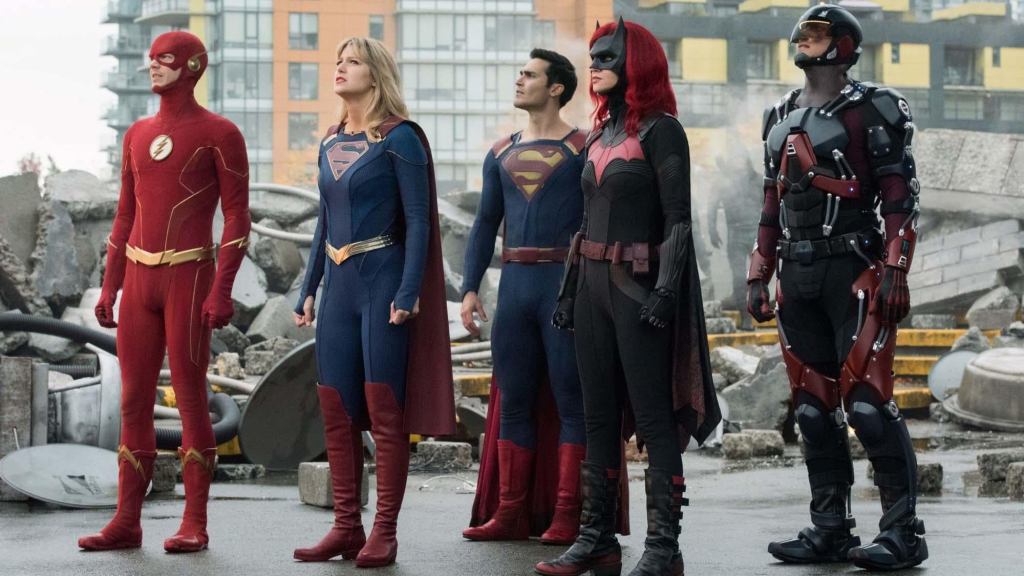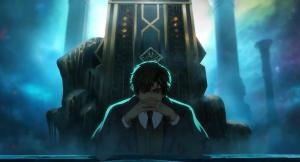Last night, in the season two finale of Superman & Lois, fans learned that not only does the series not take place on Earth-Prime, but that Superman (Tyler Hoechlin) is almost certainly not the same one who existed prior to the events of Crisis on Infinite Earths. That Superman, one assumes, is still living in the Earth-Prime universe, either on Earth or out in space, as he was doing prior to the Crisis.The twist surprised a lot of people, infuriated some, and got lots of people talking on social media during the finale. But does it actually make sense, given what we already knew?
Videos by ComicBook.com
For those who need a quick refresher: When Supergirl first launched on CBS, The Flash and Arrow were already airing on The CW. A crossover between Supergirl and The Flash codified that the three shows all existed within a shared multiverse, but that Arrow and The Flash took place on Earth-1, while Supergirl took place on Earth-38.
Subsequent series mostly took place on Earth-1, with the exception of Black Lightning, which too place in its own, never-numbered universe. Then, Crisis on Infinite Earths happened.
In the comics, Crisis on Infinite Earths was a 12-issue storyline (with tons of tie-ins, of course) which brought an end to DC’s multiverse. An infinite number of universes were destroyed, with five notable ones being collapsed into a single timeline at the end of the event, and almost nobody remembering it had ever happened, or that there had ever been a multiverse.
The TV version happened a little differently: while the multiverse was seemingly destroyed, and a number of Earths were consolidated into Earth-Prime (a designation borrowed from the comics — but used much differently on TV). Supergirl and Black Lightning spent their final seasons sharing real estate with the other superheroes, and in the final moments, fans learned that Superman’s son Jonathan — a baby during Crisis — was now twin sons, as a result of alterations to the timeline.
That set up — or so we thought — Superman & Lois, where the Man of Steel was father to Jonathan (Jordan Elsass) and Jordan Kent (Alexander Garfin), two teenage boys, with his wife Lois Lane (Bitsie Tulloch). If you looked hard enough, you could find some “tells” as early as the pilot that something was different. One key difference to consider, is that the multiverse wasn’t actually destroyed by Crisis, as it had been in the comics. In the final episode of the crossover, it was revealed that while Earth-Prime wasn’t capable of seeing or traveling to other Earths, they still existed, and most of the characters who appeared to have died during the Crisis were doing just fine on their own worlds.
In the pilot, Superman wore a different costume than the one seen on Supergirl and in the two previous Arrowverse crossovers, and in flashbacks, he wore a costume more similar to the one from the comics or the Fleischer cartoons from the 1940s (something that had never been seen on Supergirl). The Kent farm was also a different place — the “Elseworlds” crossover, which took place on Earth-38 and Earth-1, depicted it as being the farm from Smallville, but Superman & Lois is shot elsewhere. And a script for the pilot, which leaked online at some point, featured direct references to The Flash and Supergirl, but those were removed from the final cut of the episode.
On the other hand, there’s John Diggle (David Ramsey). In the first season of Superman & Lois, the character appeared to be continuing on a plot from the end of Arrow, in which he found a Green Lantern ring. That was supposed to be Diggle’s big, epic ending, but since he has come back a few times, the shows have had to find reasons for him not to be a Green Lantern. The fix seemed to be that the box he opened — the one with the ring inside — was then sealed shut, and he wasn’t able to open it again. That storyline was referenced on Superman & Lois and then picked up on in a recent episode of The Flash, suggesting that the two take place in the same universe. That was directly contradicted during our recent interview with Supeman & Lois showrunner Todd Helbing.
“The Arrowverse is on Earth-Prime, we’re on a different Earth; I’m not sure what number that is yet,” Helbing told ComicBook.com. “So Diggle’s history…he’s John Diggle but his history is not exactly the John Diggle’s history that was in Arrow, and that holds true for every character.”
There are other aspects that don’t quite track: Superman openly references the events of Crisis on Infinite Earths in early episodes of the series, but is unsurprised when John Henry Irons (and later Bizarro) turn out to be from parallel Earths. If this Superman took part in the Crisis, he likely should have thought that other Earths were destroyed (or at least cut off), but on Superman & Lois, he’s pretty nonplussed by their existence.
So, did this version of Superman simply try and fail to save his universe during the Crisis, only to find his world restored after the fact, with all of this happening off-camera? That actually feels like the most likely scenario. After all, that likely happened to a great many Supermen throughout the multiverse. We saw in Crisis that not every Superman was recruited to fight the Anti-Monitor, with only the Earth-38 Man of Steel and Earth-96, Brandon Routh’s “Kingdom Come” Superman coming to the Waverider.
So — if we are to take all of this at face value, what does it mean?
Helbing told ComicBook.com that the writing staff wanted the freedom from constraint that being a separate show provides.
“When Greg Berlanti called me and was talking to me about this show, I was like, the burden — maybe burden might not be the best word for it, but just having to track and keep track and tabs of the storylines of six, seven shows or whatever it is, and how they’ve interacted — it becomes limiting to what you can do to tell a cool story, particularly when you’re trying to launch a new show,” Helbing explained. “So, it is freeing in a huge way, where we’re like, ‘Okay, we can invent John Diggle’s story. We can invent Lucy Lane’s story. We can invent General Lane’s story. We can invent everybody’s story to help us make the best version we can make.’”
It seems likely that the plan — or at least Berlanti’s intent — was to set the show on Earth-Prime. They tried their best to steer clear of referencing past events, so that they could pivot if they wanted. Now, they have pivoted, and left relatively few dangling plot threads as a result.
Diggle’s situation is the only thing that’s really difficult to explain — but even then, is it? The Green Lantern ring did not choose John Diggle because he was Oliver Queen’s bodyguard-cum-sidekick. It chose him because he was able to overcome great fear — at least if the mythology carries over from the comics and feature film to the Arrowverse. It’s entirely plausible that a version of Diggle who was never Spartan on Team Arrow, could still have come into possession of that magical green space box, and could be dealing with its fallout the same way Earth-Prime’s Diggle is. Who knows? Maybe this Diggle will one day fulfill the destiny that Earth-Prime’s Diggle rejected.
This feels like an obvious retcon, but given how little Superman & Lois interacted with the wider Arrowverse, it isn’t one that’s especially surprising, or creates too many plot holes. In terms of multiverse-altering creative choices, fans might not all love this one…but it isn’t particularly illogical.
Superman & Lois has been heavily influenced by the era of comics that began in 1986, with John Byrne’s The Man of Steel, which spun out of the events of Crisis on Infinite Earths. That era wiped the previous continuity from existence, and Superman was reintroduced, with characters like The Eradicator and John Henry Irons becoming staples in his continuity within a few years, where they had not previously existed. It feels like this move more fully embraces the notion that the Superman who appeared on Supergirl is more analogous to Earth-1’s pre-Crisis Superman from the comics, while Superman & Lois‘s Superman is closer to the post-Byrne Man of Tomorrow. It actually makes a lot of narrative sense, given the way the series has been set up so far, even if it would have been preferable to fans that those facts be laid out in advance.
You can catch the first season of Superman & Lois on HBO Max, and the season 2 finale is now available on The CW’s app and website.









